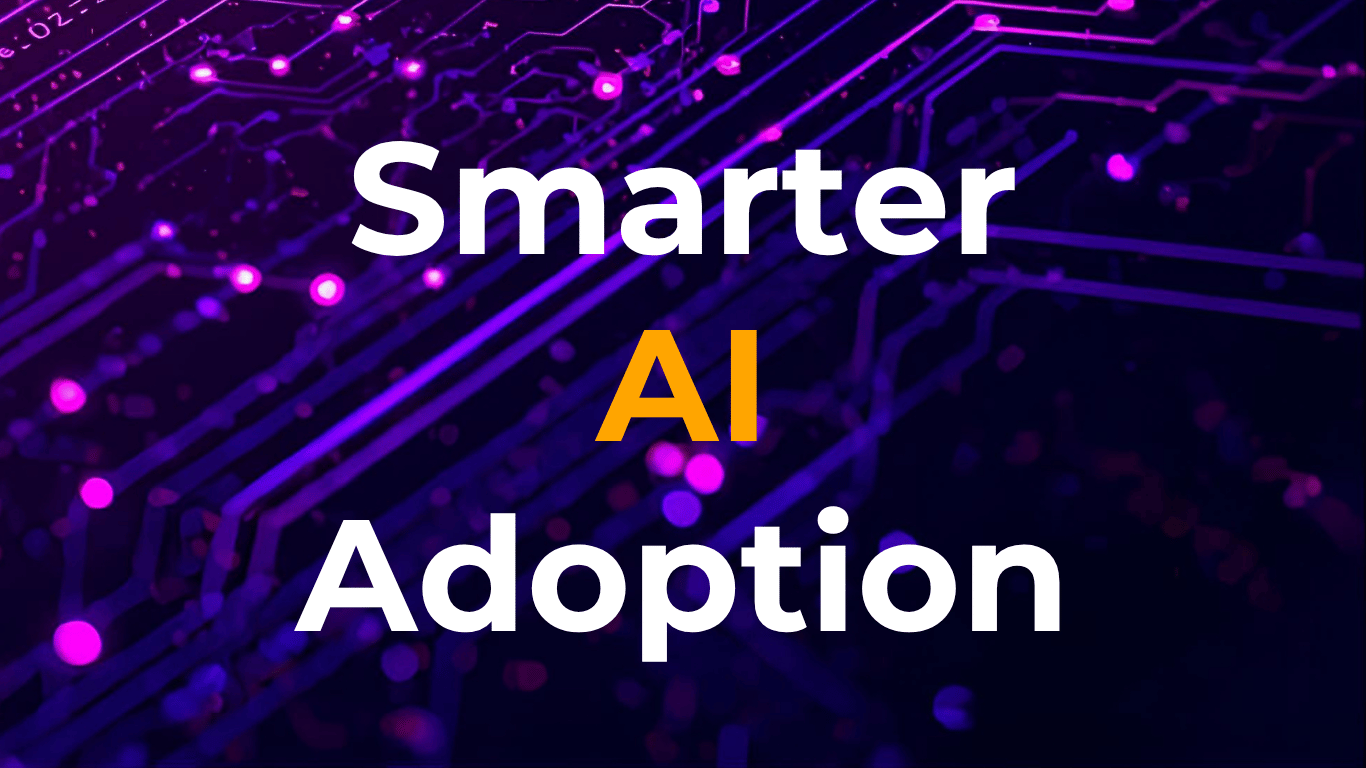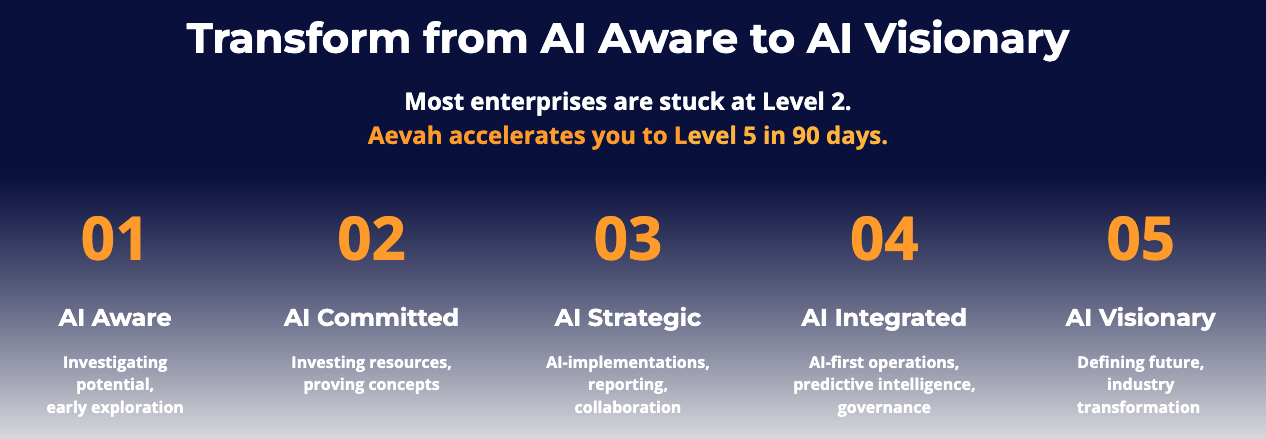Gratitude and Governance:
What Responsible AI Leadership Actually Looks Like
As we head into Thanksgiving and the season of reflection, something interesting is happening in boardroom conversations about AI.
The question has evolved from "Should we adopt AI?" to something more nuanced: "Are we deploying AI in a way that creates sustainable value while honoring our responsibilities to stakeholders?"
This shift feels appropriate for the season. Thanksgiving reminds us to pause and consider not just what we have, but how we steward it. The same mindset applies to AI leadership.
The executives who will win with AI over the next decade aren't simply the ones who move fastest. They're the ones who move with intention, recognizing that extraordinary capability comes with equally extraordinary responsibility.
The Dual Mandate No One Talks About
There's an interesting tension playing out in C-suites right now. Investors want AI-driven innovation and efficiency gains. Your people want assurance that AI will enhance rather than undermine their work. Regulators are establishing frameworks that will reshape how AI operates in enterprise contexts.
All three expectations are legitimate and should not be ignored.
Yet most organizations treat AI governance as if it exists in a separate universe from AI innovation. Governance teams create frameworks. Innovation teams complain those frameworks slow them down. The result is either reckless deployment or analysis paralysis.
Recent research from McKinsey reveals that only 11% of organizations have achieved widespread AI adoption with measurable business impact. The reason isn't lack of technology or talent. It's the absence of governance structures that accelerate responsible deployment rather than inhibit it.
The leaders who understand this recognize governance isn't the enemy of innovation. It's the foundation that makes sustainable innovation possible.
The Real Cost of Getting This Wrong
The regulatory landscape is moving faster than most organizations realize. The EU AI Act becomes enforceable in 2025. The SEC's new disclosure requirements mean AI-related risks are now board-level concerns.
A recent study by IBM found that the average cost of a data breach involving AI systems is $4.45 million. But the financial impact is just the beginning. Reputational damage, loss of customer trust, and talent exodus create compounding costs that don't show up in quarterly reports until it's too late.
Eighty-two percent of data scientists and AI engineers say they would leave an organization that deploys AI irresponsibly, according to research from the AI Ethics Lab. When high performers leave because they're uncomfortable with how AI is being used, you don't just lose expertise. You lose the institutional knowledge that makes your AI systems work in the first place.
Stewardship Over Speed: What Thoughtful Deployment Looks Like
The Thanksgiving principle applies directly to AI deployment. Just as we gather around tables to share abundance thoughtfully, the best AI leaders approach deployment with the same mindfulness.
Who benefits from the AI systems we're building? Who might be harmed if we're not careful? How do we ensure the value created is shared appropriately?
These aren't soft questions. They're strategic questions that determine whether AI creates sustainable value or temporary advantage that erodes trust.
Beyond Pilot Purgatory
Most organizations are stuck collecting proof-of-concepts like trophies. Organizations with mature AI governance identify specific use cases where AI compounds value over time and deploy with discipline. They ask "Should we do this?" before "Can we do this?"
Just as the grateful farmer doesn't hoard or waste a good harvest but shares it carefully with their community, these organizations deploy AI in ways that create broadly shared value.
Transparency That Accelerates
Leading organizations create AI transparency cards that explain in plain language what the AI does, what data it uses, how decisions are monitored, who's accountable, and how to appeal decisions.
The cards don't slow deployment. They accelerate it by creating shared understanding and reducing the back-and-forth that typically happens when questions arise.
Governance as Competitive Advantage
Smart organizations create AI approval fast tracks for use cases that meet specific criteria: limited scope, well-established techniques, human-in-the-loop design, transparent decision-making, and documented oversight.
Projects that meet these criteria get approval in days, not months. Governance becomes a competitive advantage, not a bottleneck.
The Foundation Nobody Wants to Discuss
Here's the uncomfortable truth: you can't govern what you don't understand, and you can't understand AI outputs if your underlying data is a mess.
Seventy-six percent of organizations report that poor data quality is their biggest barrier to AI adoption, according to Gartner research. Yet most AI governance frameworks focus entirely on model behavior and ignore data governance entirely.
Organizations getting this right treat data governance and AI governance as inseparable. They ensure data lineage is documented and accessible. They establish data quality standards before AI systems consume that data.
The AI Semantic Data Layer embeds governance directly into how data flows through the organization. Every data point carries its lineage. Every transformation is traceable. Every access is governed by policies that adapt in real time.
This isn't incremental improvement. It's a different architecture for how enterprises handle the intersection of data and AI.
The Board Questions That Matter
AI governance is now board-level responsibility. The SEC's new cybersecurity disclosure requirements make this explicit. Yet many boards lack the framework to have meaningful AI governance conversations.
Here are the questions boards should be asking:
"What's our appetite for AI-related risk, and how does it align with our overall risk tolerance?"
"How are we measuring the effectiveness of our AI governance framework?" Effective governance is measurable: deployment velocity, incident rate, stakeholder trust metrics, and competitive advantage gained through responsible deployment.
"What would a significant AI governance failure look like for us, and how would we know if we're heading toward one?" Organizations need early warning systems for AI risk, not just post-incident analysis.
"Are we creating competitive advantage through our approach to AI governance, or just checking compliance boxes?"
Carrying the Spirit Forward
The spirit of Thanksgiving shouldn't end when the season does. The best AI leaders carry that sense of stewardship into every decision about deployment and governance.
When a team proposes a new AI application, the first question becomes "Should we do this, and if so, how do we do it responsibly?" When an AI system produces unexpected results, the response is to investigate, understand, and improve. When stakeholders raise concerns, those concerns are treated as valuable signals.
This approach doesn't slow innovation. It focuses it. Organizations that operate this way report higher success rates, lower rates of harmful incidents, and stronger stakeholder support.
Gratitude-informed governance turns out to be good business.
Your Year-End Planning Priorities
As organizations finalize budgets for the coming year, the Thanksgiving season offers natural timing for reflection. Before the year-end rush kicks in, there's space to think carefully about how your organization wants to approach AI.
Invest in data infrastructure that enables trustworthy AI. You can't bolt governance onto systems built without it.
Establish clear accountability for AI outcomes. When something goes wrong, everyone should know who's responsible.
Create feedback loops that capture concerns early. The best governance frameworks identify problems before they become crises.
Build governance that scales with your ambitions. If your framework can only handle a handful of deployments, it won't serve you at scale.
The organizations that will lead in AI aren't the ones deploying fastest today. They're the ones building frameworks that allow them to deploy responsibly at scale tomorrow.
The Path Forward
As we move from Thanksgiving into the final weeks of the year, the question worth carrying forward isn't just "What can AI do for us?" It's "What kind of organization do we want to become as we integrate these capabilities?"
The executives who embrace this tension will build organizations that thrive in an AI-enabled future. They'll create value for shareholders while honoring responsibilities to employees, customers, and society.
They'll approach AI leadership with the same spirit we bring to Thanksgiving itself: gratitude for the capability we've been given, thoughtfulness about how we use it, and commitment to sharing its benefits broadly.
What's your approach to balancing AI innovation with responsible governance?
The conversation is just beginning, and the best frameworks will emerge from leaders willing to share what they're learning along the way.
About Aevah
Aevah's AI Semantic Data Layer provides the foundation for responsible AI deployment at scale. By embedding governance directly into how data flows through your organization, we enable enterprises to deploy AI with confidence, transparency, and accountability.
Just as Thanksgiving reminds us to be thoughtful stewards of what we've been given, Aevah helps organizations be thoughtful stewards of their AI capabilities.
Ready to build AI governance that enables rather than inhibits?



.png)